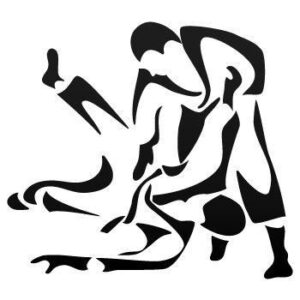
The different forms of Taekwondo

Taekwondo learning is based on the different forms that compose it, the simultaneous study of which is essential to the complete practice of martial art.
Poomsae
Poomsae (the theoretical aspect of art) is a succession of techniques to be known and to be able to achieve with strength and determination. It requires some internal work.
A poomsae is a series of movements, blockages as well as attacks, representing an imaginary fight against one or more opponents.
To this is added a certain philosophical dimension since the movements within the poomsae follow very precise lines (those of the eight elements of Palgwe in the Taegeuk Poomsae, those of Korean ideograms in the Upper Poomsae “more details in the member space”), and that the movements of the poomsae are consistent with the values represented by these lines.
Each poomsae therefore has its own form (poom in Korean) and identity (sé or sae).
The primary goal of the poomsae is to allow a progressive learning of the basic movements and positions of Taekwondo, but also of the notions of breathing, concentration and balance.
Article: The different forms of taekwondo
Example of a poomsae:
Kyorugui
Kyorugi (combat) is a form of free combat, regulated by a number of rules. As hits can be made at full power, competitors must be highly protected (forearm, shin, chest, chest, helmet, shell and mouthguard). Punches to the face, punches below the waist and sweeping are prohibited in official competition. You can practice fighting in leisure as well as at the professional level.
We often talk about foot fencing when we refer to Olympic taekwondo “combat” because the goal of the game is to score the most points by touching certain areas of the chest and head. Speed, precision, strategy and physical condition are essential criteria for competition.
Beginner competitions do not allow kicks to the face to allow beginners to take their bearings and experience with people of their level.
Taking care of the physical integrity of competitors is taken very seriously by the World Taekwondo Federation.
Article: The different forms of taekwondo
Example of an Olympic Taekwondo fight:
Han Bon Kyorugui
Han Bon Kyorugui (combat step) are exercises of attacks and counter-attacks. It is a kind of orchestrated and touchless combat that allows you to use blockages or attacks.
Han-Bon is used to develop combat and defence techniques. The sequences are codified to allow to acquire a mastery of the fight before starting the free fight.
They are practiced in two forms: on a single attack or Han-Bon Kyorugi or on three attacks or Se-Bon Kyorugi. Attacks are blocked or dodged and followed by a counter-attack.
These Han-Bonds make it possible to develop the precision and efficiency of techniques and movements.
Article: The different forms of taekwondo
Example of Han Bon Kyorugui:
Ho Shin Soul
Ho Shin Soul, literally “technique (soul) to protect (ho) his being (shin)”. In everyday language we simply say self-defence, applicable to street fighting.
It is about applying all the gestures, skills and automatisms developed in Taekwondo in order to defend yourself effectively against attacks. It includes techniques of dislocations, strikes, imbalances, mowing or projections and uses of everyday objects.
Article: The different forms of taekwondo
Example of self-defence techniques:
Kyokpa
Kyokpa refers to the breakage in Taekwondo, apart from their spectacular demonstration side, the breakage is essentially intended to assess the level of mastery of a technical gesture.
They are practiced using wooden boards that the practitioner must break by performing a given technique.
At a certain level, case tests are an integral part of the assessment in grade passages.
Article: The different forms of taekwondo
Excerpt from a professional demonstration team’s case training:

